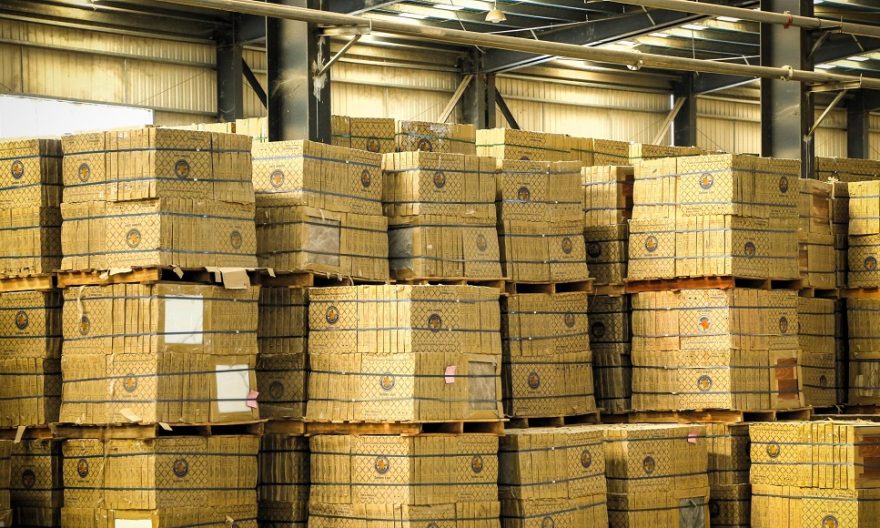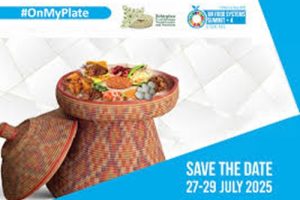
Ethiopia aspires to join the middle income countries by 2030 and the government is devoting its time, finance and human resource for attaining structural change. Currently, agriculture plays a dominant role in the economy containing 80 % of the labor force and is a major export and accounting for more than78 % of exports. While the service sector plays about 40 % the role of the manufacturing sector role is insignificant at around 14 %, making the path to structural change challenging.
The manufacturing sector utilizes relatively well trained labor force, technology and promotes itself from low productive activity to higher ones, employing thousands of workers in small plots of land. It creates forward and backward links both with the agriculture and the services sector, serving as an import substitute, boosting exports attracting foreign investment, and accelerating the private sector’s role in the economy. In contrary, though the agriculture sector plays dominant role in the economy, it is vulnerable to the extreme climate condition both to drought and flood, subsistence by its nature, most farmers engaged in farming with less than half hectare of land, utilizes small amount of modern inputs such as fertilizer, herb and pesticides which affects its yield.
In addition, due to population growth in the rural part from time to time farmer’s size of their plot is fragmenting which again makes the farming activities environmentally unsustainable.
Therefore, shifting the labor force stranded in the rural part of the country to the non- farming sectors which have high productive rate such as the manufacturing and the service is helpful to attain structural change in which pave the way to attaining structural change and joining the middle income countries by 2030.
The government tried its level best to expand the manufacturing sector. It introduced new laws to attract local and foreign investors to engage in the sector, constructed industrial parks in various places of the country equipped with internet and banking services and clean water. It also provides shades in the park with fair rent.
Considering the pivotal role of the manufacturing sector in attaining the structural change, long ago, the government has been developing the energy sector by exploiting sources such as hydro power, geothermal, wind, solar and others. It is understood that without supplying reliable energy, expanding manufacturing is impossible.
Among the products manufactured in the industrial parks, textile and garment, leather and leather products, agro-business, and pharmaceuticals have supported the nation’s aspiration for import substitution. This effort has helped the country save hard currency and address macroeconomic challenges, such as debt service, foreign currency crunch, inflation, unemployment, and illicit trade.
As mentioned above, boosting the manufacturing industry is essential for transforming the economy and yet the sector is dependent on inputs imported from oversea market which needs its meager hard currency. Therefore, substituting of some products imported from abroad helps the nation to save hard currency and the ongoing efforts in these regard should be strengthened.
According to the Ministry of Industry, the primary goal of the import substitution policy is to protect, strengthen, and grow local industries using a variety of tactics, including tariffs, import quotas, and subsidized government loans. The objective is to bring about structural changes by creating investment opportunities in non-traditional sectors.
Countries implementing this mechanism attempt to shore up production channels for each stage of a product’s development. Import Substitution is generally referring to a policy that eliminates the importation of the commodity and allows for the production in the domestic market.
The objective of this policy is to bring about structural changes in the economy. The structural change is brought about by creating gaps in the process of eliminating imports and thus making investment possible in the nontraditional sectors. From a war-torn and famine-plagued country at the beginning of the 1990s, Ethiopia is today emerging as one of the fastest-growing economies in Africa. Growth in Ethiopia has surpassed that of every other sub-Saharan country over the past decades. The government has set its eyes on transforming the country into a middle-income country by 2030, and into a leading manufacturing hub in Africa.
A conscious move to stimulate industrial growth in Ethiopia began in the mid-1950s with the formulation of the First Five-year Plan (FFYP). Ethiopia has seen three different governments over the last eight decades. In keeping with the political ideologies governing the economic principles of the time, these successive governments adopted different policies for the development of industry in Ethiopia.
The current Government plans to privatize leading state owned enterprises signal a significant shift toward market-based reforms and a new flexibility with regard to economic policy making. At the moment, implementation of import substitution is not as effective as it should be compared to the great emphasis given by the government, such as, giving out several incentives to attract Foreign Direct Investment and the potential that the country has in terms of resources and market, Ethiopia’s import substitution effort has long way to go to achieve the desired outcomes.
According to the newly endorsed Homegrown Economic Reform agenda, the government clearly states that efforts will be made to achieve a varying degree of import substitution of wheat, cotton, rice, and oilseeds (i.e., for agro-industries), and sufficient and high-quality production of lowland pulse commodities as well as sesame for the export market and irrigation based small-scale commercial production of selective commodities. By doing so, the government aims to reduce mounting debt, a shortage of foreign exchange, a swelling unemployment rate, inflation, low productivity, and workforce skills mismatched to the economy’s needs.
Development planners, until the late sixties used the import substitution strategy as a pillar of all their efforts. This strategy is based on industrialization through establishment or boosting of existing enterprises producing goods which were formerly imported. There are two prerequisites to this strategy of development. First, a country must have a substantial amount of imports and secondly new manufacturing industries, which are to produce the goods that take the place of commodities formerly brought in from abroad.
The recent assessment regarding import substitution reveals that, Arerti Industrial Park has earned more than 1 billion Birr from import substituted products in the last eight months, Industrial Parks Development Cooperation (IPDC) announced.
Arerti Industrial Park, which is one of the investment centers managed by IPDC, has secured the income by offering various products produced by the park to the domestic market in eight months of the 2023/24 Ethiopian fiscal year, it was indicated.
Zemen Junedin IPDC’s Investment Promotion and Marketing division Deputy CEO said that, more than 19.4 million USD has been saved in the production of various import substituting products at the industrial park.
Zemen also pointed out that, market linkages worth more than 12.5 million USD have been created over the last eight months through providing resources and raw materials to manufacturers from the surrounding area.
In addition to the market linkage and import substitution, more than 830 new jobs have been created for citizens, and now more than 1500 citizens have job opportunities in the park.
Currently, there are three investors who have invested in Arerti Industrial Park and are engaged in the production process of garments and textiles as well as ceramics and wood products.
BY ABEBE WOLDEGIORGIS
THE ETHIOPIAN HERALD TUESDAY 16 APRIL 2024





